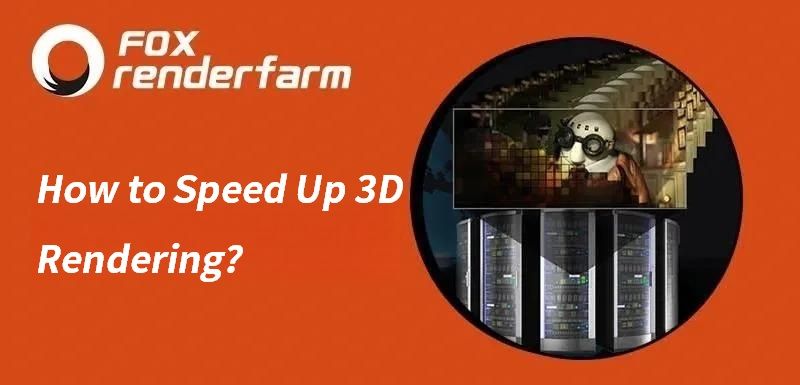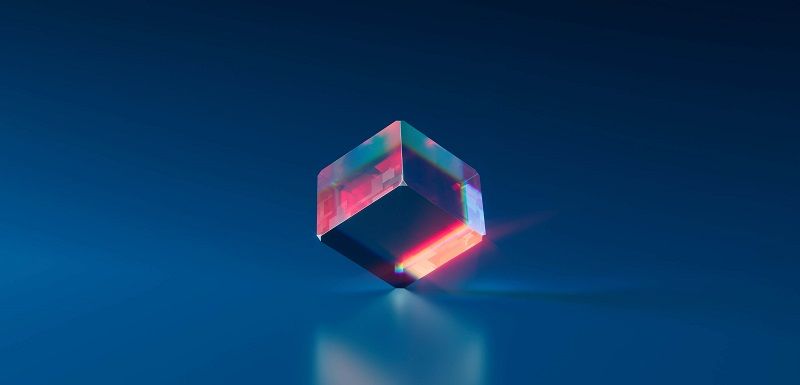A Guide to the Career Growth of VFX Compositors (1)

As the leading cloud rendering services provider and render farm in the CG industry, Fox Renderfarm has an outstanding team with over 20 years’ experience in the CG industry. Team members are from Disney, Lucasfilm, Dreamworks, Sony, etc. With professional services and industry-leading innovations, they serve leading VFX companies and animation studios from over 50 countries and regions, including two Oscar winners.
In this artichle, we will share a guide to the career growth of VFX Compositors from Zhiyong Zhang, Compositing Technical Director in Base FX(Base Media is the leading visual effects and animation studio in Asia).

Part 1: Introduction
What is Compositing?
There are many different explanations about compositing on the Internet. Since it's difficult to explain, I would analyze compositing from some shots.
Like the scene in "Monster Hunt", the foreground is made with a 3D model, and the background is made with a combination of the original paintings and pictures. That is to do some MP, color adjustments, elements setting and real shot adding. Finally, all the pictures are going to be integrated, which is a compositing process.
The professional value of composting
Compositing is the last part of the visual effects in the later period. You need to blend and match three-dimensional things with the real shot through compositing techniques and methods. Through techniques and methods, add some 2D or 2.5D elements to make the picture more interesting. Compositing is making the projects that the entire visual effects team makes. Hence, compositors are responsible for the entire team, striving to adjust the project to the final optimal effect. This is the professional value of compositing.
The artistic charm of composting
For me, every adjustment on color, virtual focus, interactive light and others will make the scene more realistic or better-looking. Every step of the operation will improve the scene, bringing the compositors hope and happiness. It is awesome to do better in the time allowed and finally show something beautiful. This is the artistic charm of composting.
Part 2: Six Basic Skills of Compositors
The first basic skill is erasing. Many scenes have tracking points when shooting on the green screen, or there are some things that can’t be removed from the scene. We need to do erasing, which is very basic but important.
The second skill is rotoing and chroma key. The chroma key is to keying the green screen. There is also a key called no green screen keying, which is the rotoing.
The third skill is to match colors. Adding an element to the real shot to change the color of the material is actually matching the material, not creation.
The fourth skill is to match the virtual focus or depth of field. The material itself will actually have virtual focus, so the compositor needs to also be good at photography, otherwise, it may become a bottleneck for the compositor. The ideas of the director and the main photographer will be presented in the scenes. We use compositing to re-express what they want to express in CG. We are doing matching rather than recreating.
The fifth skill is tracking. Most compositors do 2D trackings, such as billboards or on-screen patches. And sometimes they also do 3d tracking.
The last one is the matching noise. For some demanding projects, it is necessary to switch between red, green, and blue screen, or even zoom in to the local area for comparison. It also depends on the broadcast platform. Generally, if it is broadcasting on a TV platform, the noise is not easy to see the noise. If in the cinema, as long as the brightness of the cinema is large enough, the noise of some scenes can be easily seen. The noise matching can make the picture more realistic.
Part 3: Standards for Cinema-level Film Compositing Requirements
The standards here are not officially stipulated standards but are just some common standards that I personally summarize based on experience. I divided the cinema standards for film compositing into two types: technical requirements and artistic requirements.
Technical Requirements
First of all, it depends on whether the color of the original material is changed. If you are not careful or have moved other parts of the screen including the color of the material for other reasons, it may cause customer dissatisfaction.
Secondly, whether the maximum and minimum values of the screen are consistent with the material or not. Of course, the maximum and minimum values are not for a certain scene, but for all the materials of a project.
Thirdly, whether the metadata is correct or not. If the editing requires metadata to be accurately restored, it needs to be correctly restored to the material. Generally, at the beginning of the project, it needs to agree with the previous DI or editing on how to set back.
Fourthly, whether the shifting is stuck will also be a technical requirement. The shifting should be discussed with the editor. If the editing does not require any shifting, even if it seems to be stuck, it may be a fast switch of the front and rear scenes. This is one kind of editing methods. if you do something to make it smoother, re-reverting to the clip may cause problems.
The last is whether there is any obvious flaw in the picture. The so-called flaw is whether there is a black border on the edge of the picture and whether the edge of the real shot is stretched.
Artistic Requirements
The artistic requirements will be significantly different from the previous technical requirements. We will check whether the details of the keying edges are enough to maintain the authenticity of the picture. In the normal budget, the details of the edges can be kept authentic. If the edges look fake, it may make the whole picture fall short.
Whether the bright and dark parts of the screen is matching with the material within the acceptable range? The dark and bright parts here refer more to brightening everything in the viewing facility, to see if the added thing is the same color as the real shot and whether the degree of the color cast is the same. Without considering the budget, as a compositor, the only requirement is to do something better, so try to match it.
Then, whether the compositing elements, the virtual focus of the background and the depth of field match the real shot. The depth of field of the real shot sometimes will be very shallow, sometimes it will be very deep. Generally, there will be a range, this range is taken by the lens and the camera. We can add an element in it, and change the depth accordingly.
In addition, we must also consider whether the simulation of the lens effect meets the real shooting standard. With a normal lens, the virtual focus is 1:1, and with an anamorphic lens, the virtual focus is vertical, similar to 2:1 circular virtual focus. While doing compositing, it needs to pay special attention to matching.
The next thing to consider is whether the addition of smoke, flame and other atmospheres is truly fused. The light and shadow, the virtual focus and the sharpness are matched with the whole, and the things that really melt into it are realistic.
The last thing is to consider the interactive effects, the corresponding interaction between the real shot material and the CG elements. When we do the compositing, in addition to shadows, there are some light interactions, we should consider whether to add them.
In the process of compositing, we need to give ourselves the opportunity to exercise and do more fine, otherwise, we can't make progress. In fact, the audience is very smart now, watching a lot of blockbuster movies. Therefore, we should try our best to be realistic in the time cost of cinema-level movies. If the audience feels satisfied in the cinema, it will be successful.
Follow the leading render farm and cloud rendering services provider, Fox Renderfarm, for the next part: A Guide to the Career Growth of VFX Compositors (2).
Recommended reading
Top 9 Best And Free Blender Render Farms of 2025
2024-12-30
Revealing the Techniques Behind the Production of Jibaro "Love, Death & Robots", Which Took Two Years to Draw the Storyboard
2025-02-10
Top 10 Free And Best Cloud Rendering Services in 2025
2025-03-03
Top 8 After Effects Render Farm Recommended of 2025
2025-02-10
Top 5 Best and Free 3d Rendering Software 2025
2025-02-10
Shocked! The Secret Behind Using 3D to Make 2D Animation was Revealed!
2025-02-10
How to Render High-quality Images in Blender
2024-12-04
Easy Cel Shading Tutorial for Cartoon in Blender Within 2 Minutes
2025-02-10
Partners
Previous: Fazbear & Friends Episode #4 [VERSION A] is OUT now!!
Next: 3ds Max Tutorials: Semi-realistic 3D Game Scene Interior Production Sharing (2)
Interested







